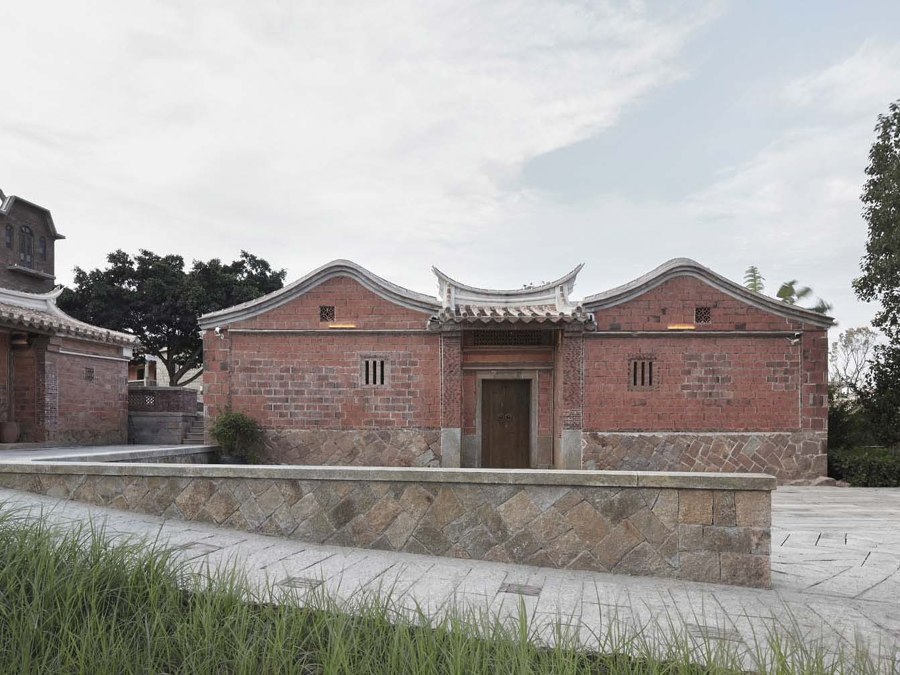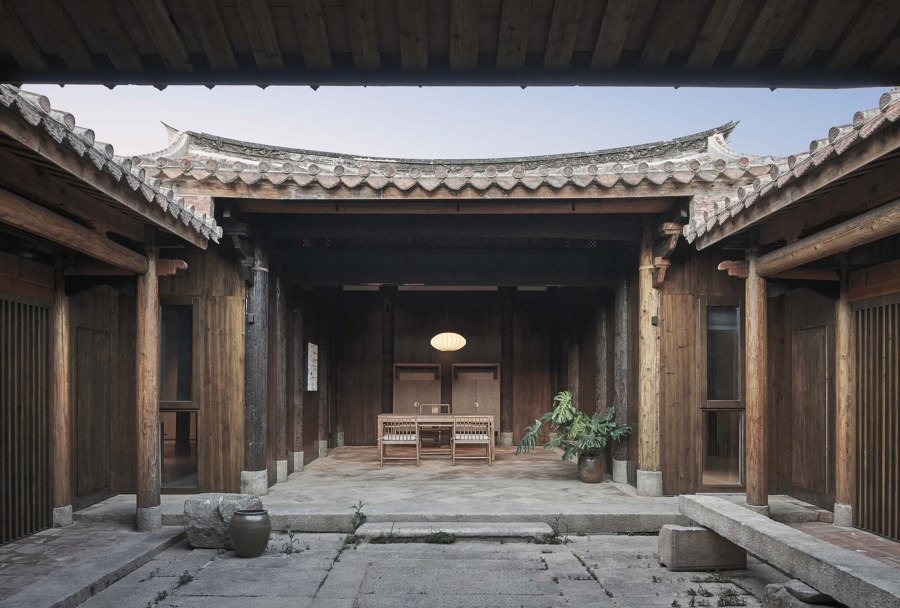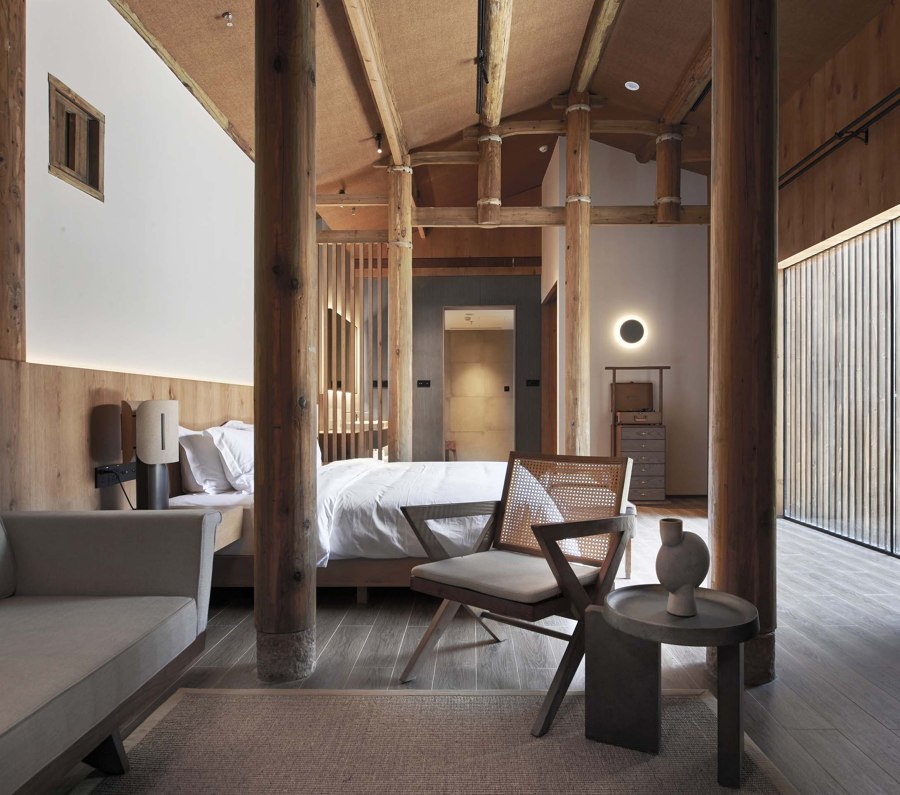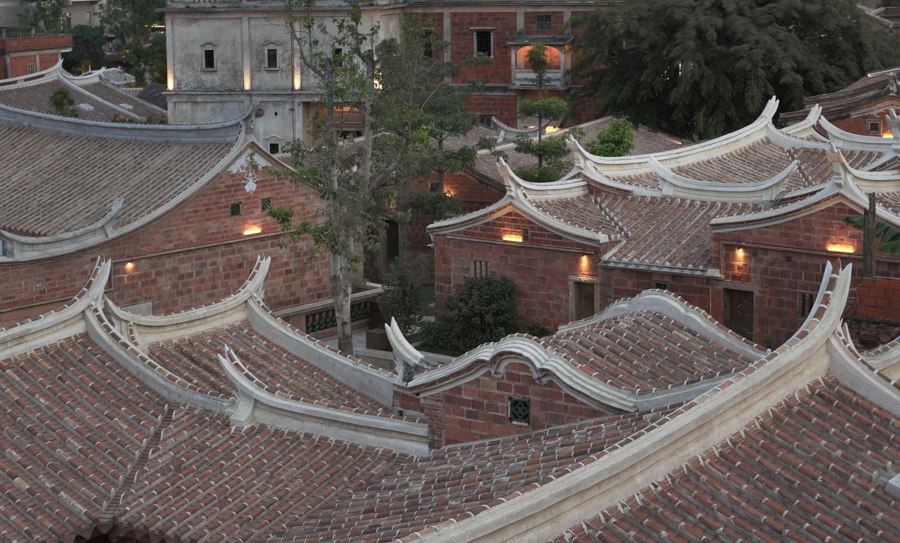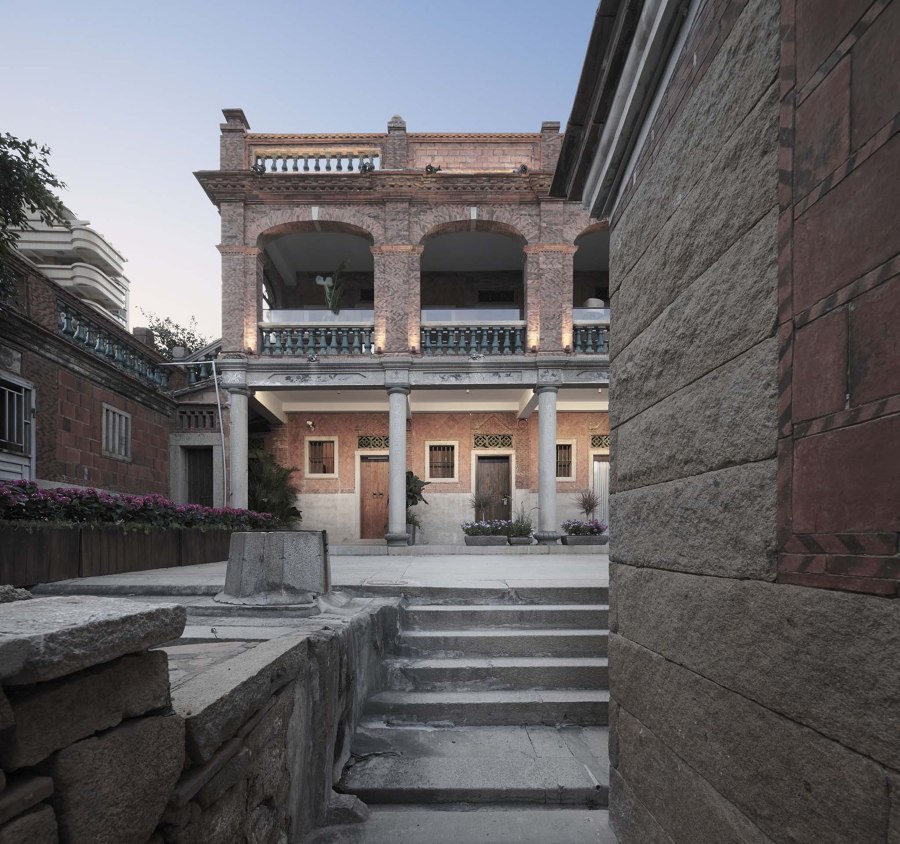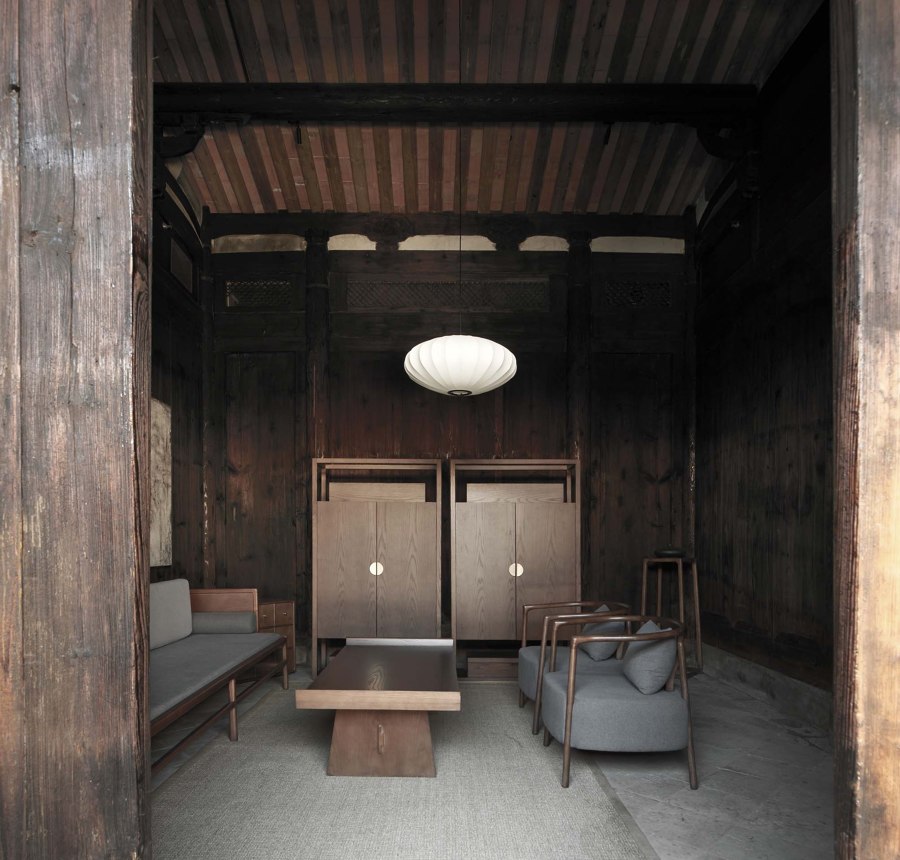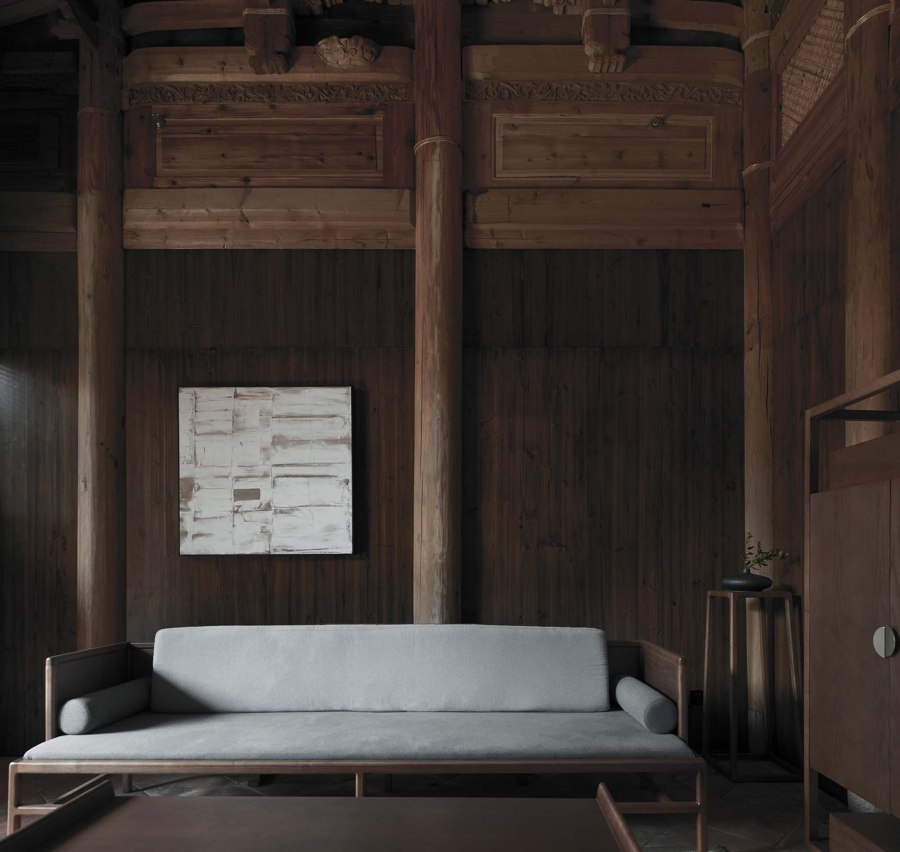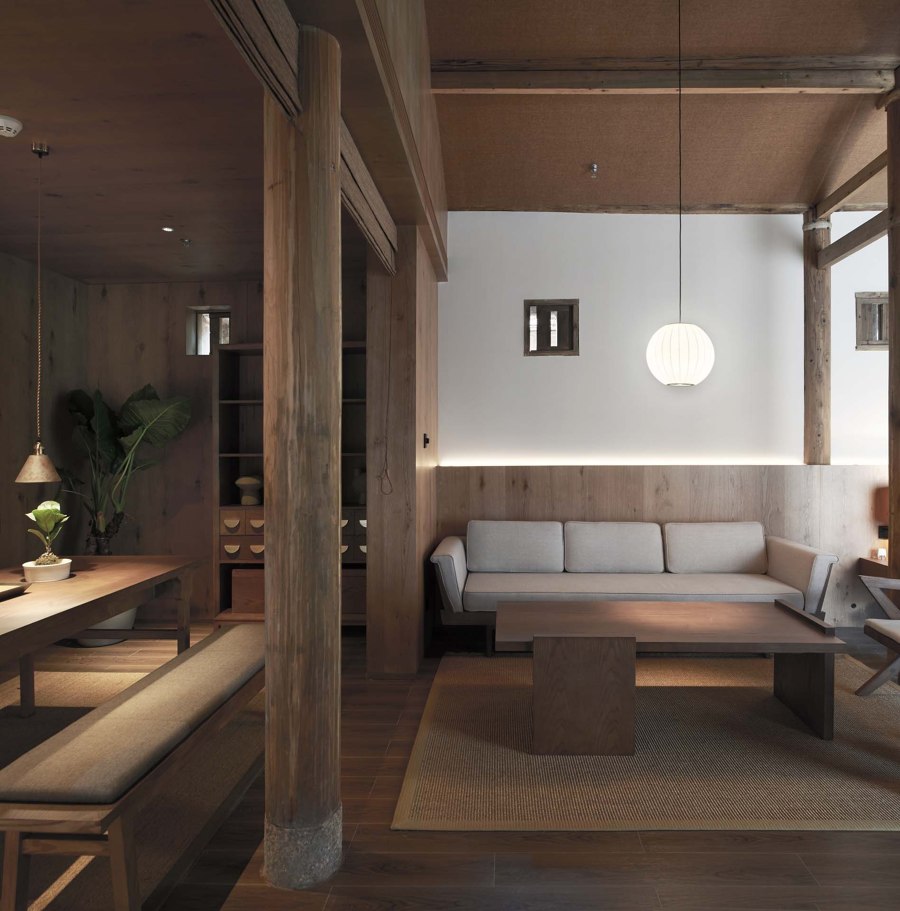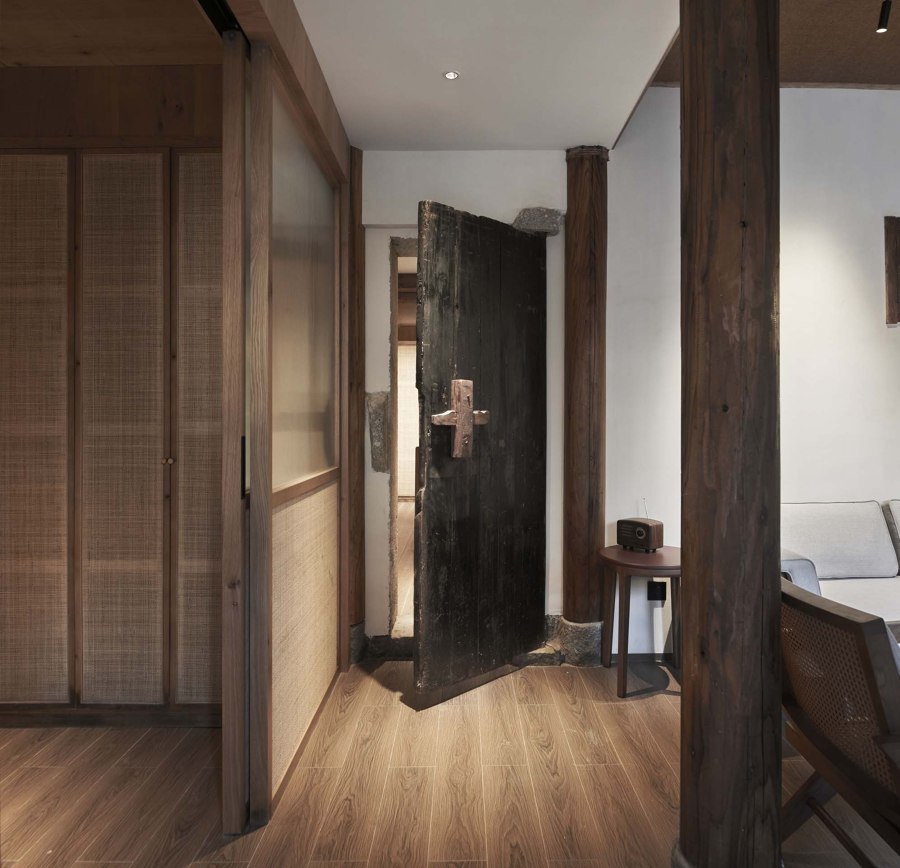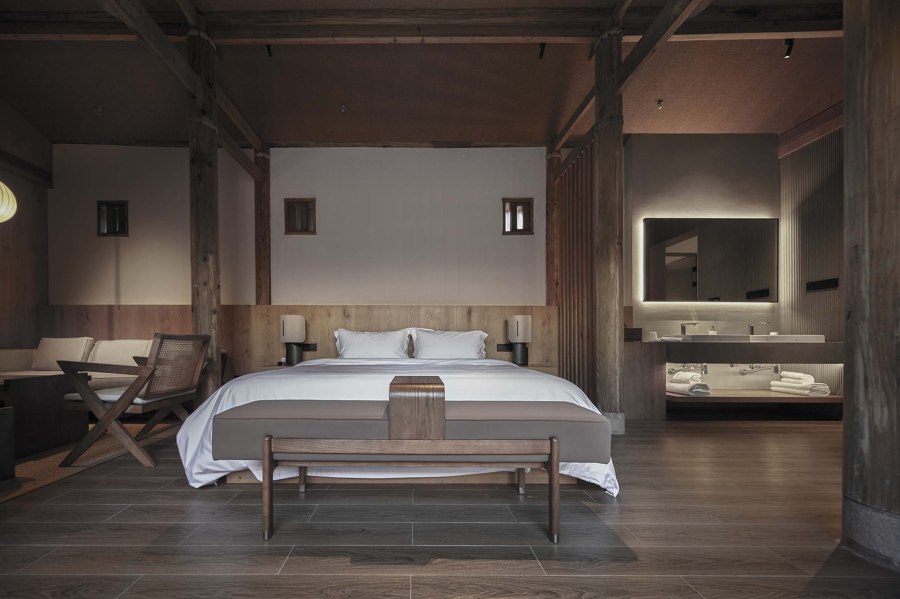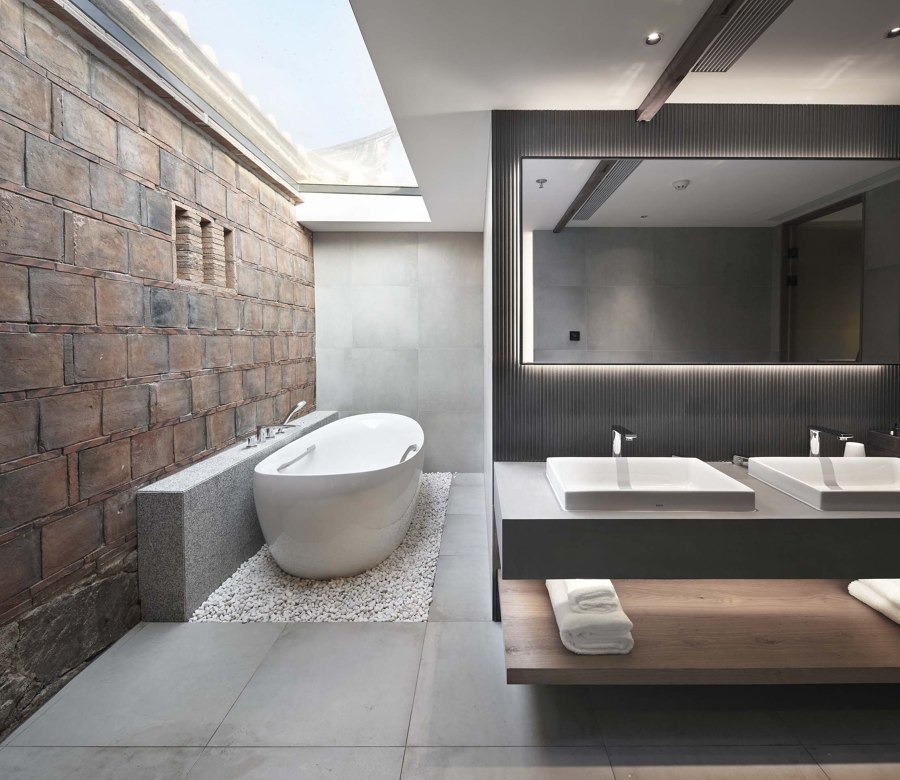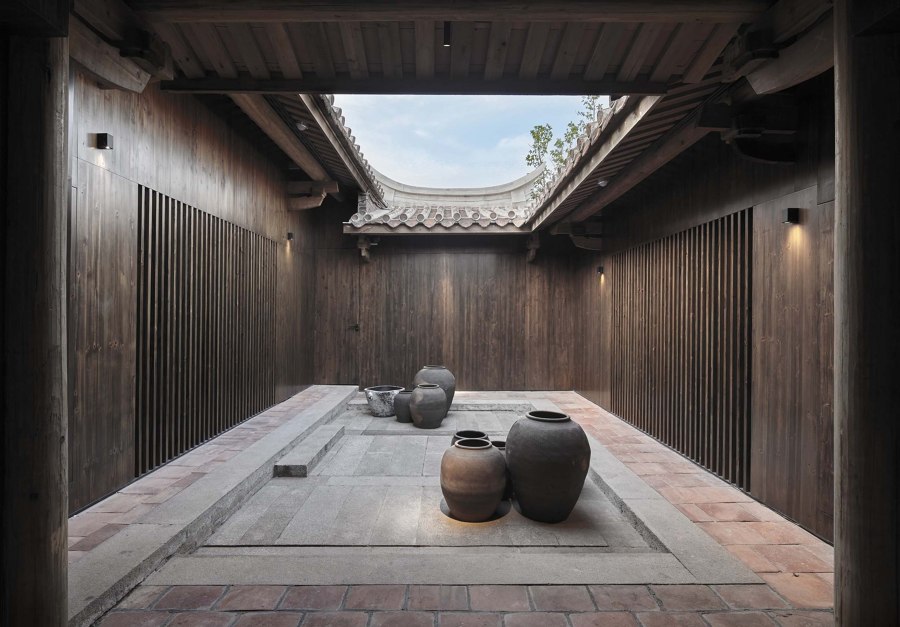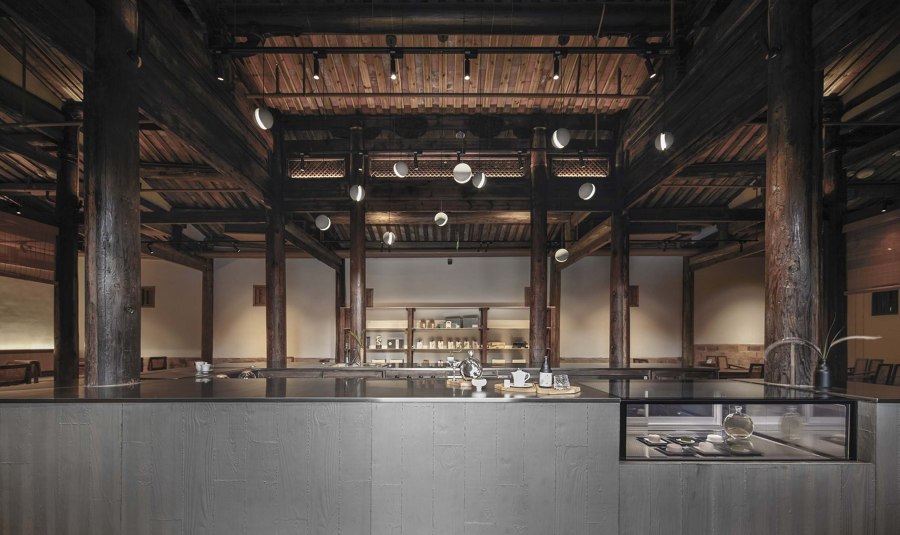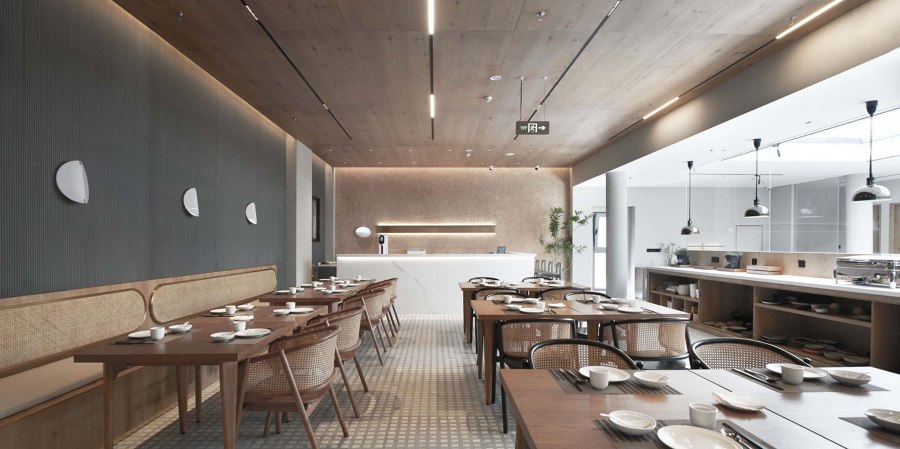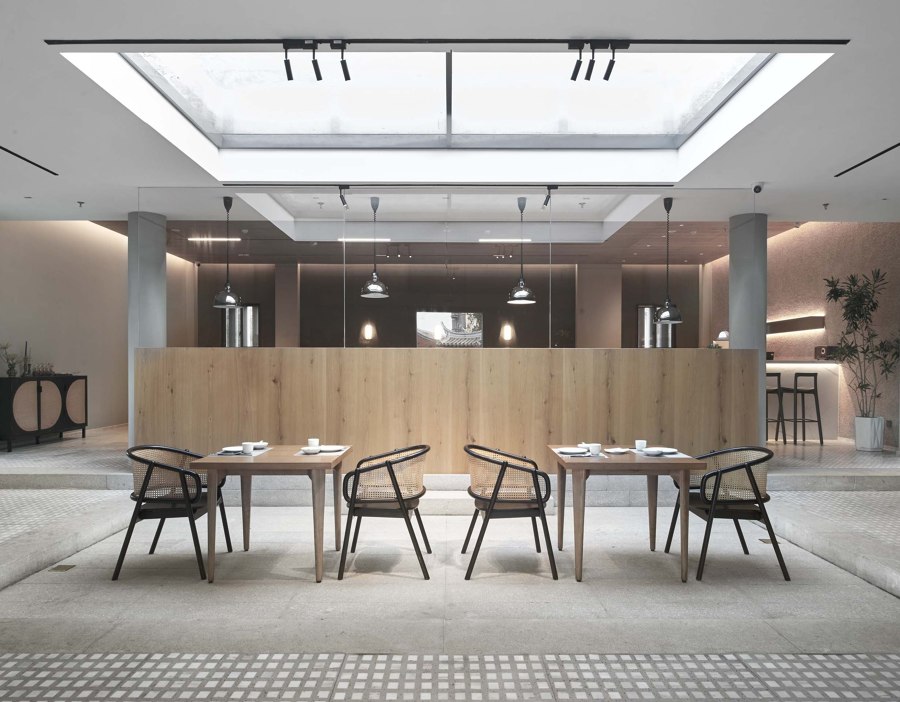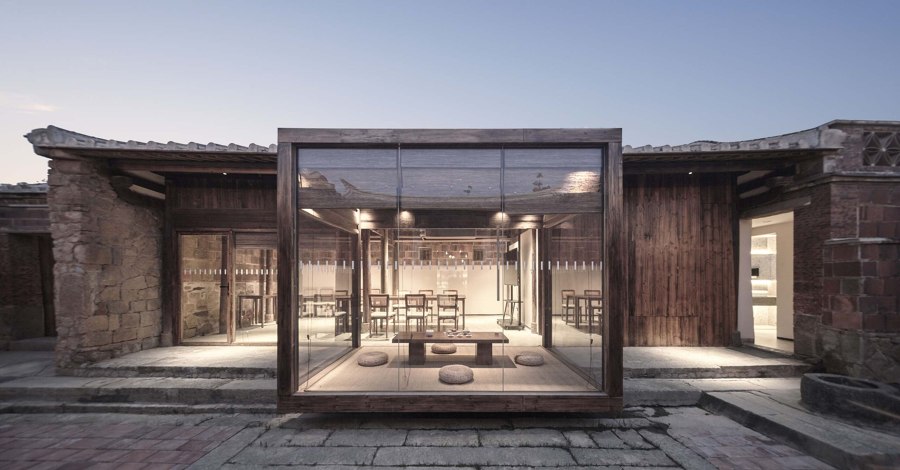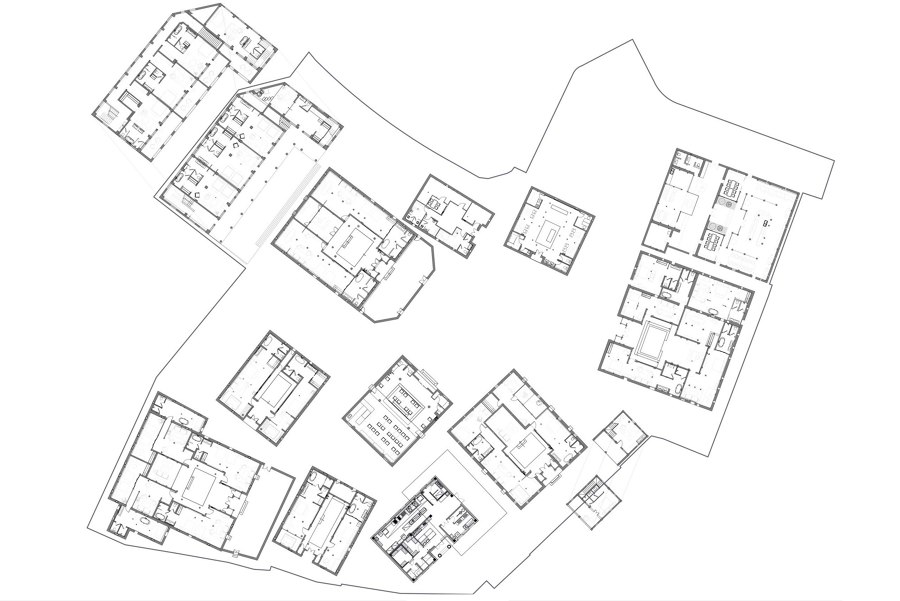Tsingpu Wulin Retreat is located in the ancient village of Wulin, Jinjiang City, Fujian Province, with a site area of about 6,000 square meters, consisting of 13 traditional houses of Fujian. Entrusted by the famous cultural resort group TSINGPU, we presided over the design and transformation of this ancient building community into a multi-business cultural tourism resort destination with guest rooms, restaurants, teahouses, exhibitions, forums, etc.
The buildings of the site are divided into two main styles: the old red brick house in southern Fujian and the Nanyang building. The buildings of different shapes subtly echo each other, creating a very rich experience of architectural places. We hope to retain such natural and original beauty, and deal with the overall space design in a more cautious way and avoid excessive design as much as possible. While fully respecting the regional architectural culture, and combining it with the modern aesthetic design language, the "New Southern Fujian Space Form" with a cultural and high-quality sense of vacation is created.
As the first cognitive space for a guest, we kept the reception space construction timber structure, dismantled divided the wooden partition wall of the room, and through the introduction of glass skylights, hidden air conditioning, and create a bright space with indoor comfort, let a guest perceive the charm of Minnan historic house space and new possibilities. The use of rammed earth materials is a good echo of the historical sense of traditional architecture.
We rearranged the internal division of each ancient house in southern Fujian of the site and made a more relaxed and pleasant spatial pattern. We opened the facade facing the inner courtyard and filled it with a wooden grille so that the natural light can enter the guest rooms while providing relative privacy.
The rooms are mainly made of wood, paint, mat, and other natural materials. The local components of the ancient building itself, such as the time-textured red brick wall of southern Fujian, the old wooden door, and so on, have been retained selectively, and form an ingenious differentiated aesthetic feeling in the same space with the new modern materials, which greatly improves the guest room experience and spatial tension.
In order to ensure the comfort of guests living in the ancient buildings, each ancient guest room is equipped with air conditioning and hot water. Through precise mechanical and electrical design, equipment and pipelines are well hidden inside the ceiling and wall of the space and try not to destroy the primitive atmosphere of the guest room space. The partition wall of the room has done a good sound insulation treatment. We carefully checked the hollow part at the junction of the beam and column with the workers at the site to ensure that the guest room has good sound insulation. The wooden windows of the ancient buildings are re-carved with new wood materials, which not only has better usability but also restores the characteristic opening way of the old windows.
We are very concerned about the spatial scale of guest rooms in traditional architecture. Both too high and too low space will affect the comfort of accommodation, so we carefully handle the height of different areas, hoping to retain the tall architectural form of the ancient house in southern Fujian, but not lose the sense of intimacy of the human scale. We suggested that each guest room should be equipped with a vinyl record player, and the music surrounding the beams and columns would make the traditional architectural space with a sense of history appear richer. Some of the larger old houses are surrounded by guardhouses. We closed the patio of the house with glass. A bathing area with natural light is created in the relatively inward and closed ancient house in southern Fujian.
Nanyang style architecture is another type of Fujian architecture on the site. We hope to create room space with a Nanyang sense that is different from the southern Fujian style. Nanyang culture is inclusive and diverse, and we try to convey this characteristic of Nanyang culture to the guests living in the guest rooms. In terms of space language, we deliberately avoid the typical symbols of the traditional Nanyang style, instead, we use a simple but rounded design technique to create a space with a sense of inclusion. Soft outfit style is more diversified, into a large number of colors, patterns, and natural elements. This kind of soft and hard outfit style collocation is our interpretation of Nanyang culture, which is inclusive but relaxed.
The restaurant is the most social public space. We used new design techniques to interpret the structure and materials of the space, hoping to create a very open and bright ancient house in southern Fujian with a modern space experience.
The teahouse space is an experience-type space that connects the retreat and outside the retreat. We hope to create a spatial atmosphere with rich layers. On the one hand, we retain the complete courtyard pattern and architectural form of the ancient house, so that visitors can feel the charm of the traditional ancient house; On the other hand, we also created a new tea space experience with multiple scenes and immersion by opening the facade and inserting a glass box. The overall tone of the teahouse space is relatively deep, close to the earth color, and the integration of the medieval style furniture with a sense of time echoes the sense of the historical weight of the ancient house in southern Fujian.
Design team:
Nazodesign Studio
Lighting Consutlant: Ljus Design
